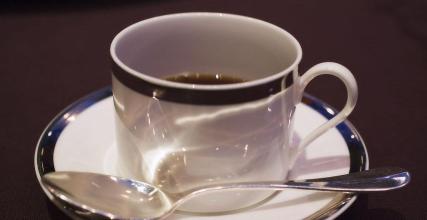Panamanian Coffee Rosa Coffee Fine Coffee Bean producing area introduction to the flavor and taste characteristics of Panamanian coffee
In 1996 Braith and Rachel visited a farm for sale in the Haramijon area of the Boketty Valley and were attracted by the beauty of the farm and immediately bought it. This is Esmeralda. Harami Jonon Farm, third son Danielle. Mr. Bideson planted the coffee world's attention on this farm-Geisha coffee!
Geisha, pronounced geisha in Japanese, is also known as geisha coffee; because the tree is taller than ordinary coffee trees, it was originally planted in a small area of the estate and used as a windbreak. The son of the owner of the estate, in order to participate in the annual Panama Best Coffee Competition, searched all the coffee trees in the estate to do the test, so that Geisha had the opportunity to appear on the stage; after that, he also participated in various world coffee competitions and won a total of eleven championships. History of Esmeralda Farm: Esmeralda Farm was founded in 1924 by Hans Elliot, a Swede, not as a coffee plantation but as a pasture, and 40 years later in 1964 by Ludwig Peterson's grandfather Ludwig. Mr. Bidsson bought Esmeralda Farm in order to have a place to live in retirement. His grandfather, Mr. Ludlow Bidsson, was born in Sweden and served as President of the Bank of America and Director of the United Nations Development Agency. His son, Mr. Braith Bideson, moved from California to Panama in 1973 to inherit his father's farm. In 1987, most of the farm was converted to coffee cultivation. In 1994, he invested in the purchase of refined coffee machinery in order to establish a brand. Mr. Braith Bideson and his wife Susan raised three children, Eligu, while the coffee farm was officially operated.(born Philadelphia, 1966), Rachel Lou.(born in Sweden in 1967), Danielle (Born in Panama in 1974)Geisha, with hurricane-like power, swept the coffee world. This coffee revolution came with great momentum, making Jamaica Blue Mountain and Hawaii Kona, who had occupied the throne of coffee kingdom for a long time, retreat. This wild variety native to Ethiopia, after numerous battles, is now widely used in major coffee producing areas, and its best spokesman, The seeds of Geisha, a La Esmeralda estate from Panama, were discovered in 1931 in Ethiopia's Geisha Forest and sent to the Coffee Institute in Kenya; Introduced to Uganda and Tanzania in 1936, Costa Rica in 1953, Panama in the 1970s by Mr. Francesco Serraxin of Domba Seven Farm from CATIE in Costa Rica to seed and then began to grow rose summer coffee. In the early years, the identification of top coffee mostly followed Japan. One king in coffee followed Jamaica Blue Mountain and Hawaii Kona. However, with the continuous improvement of coffee producing countries and the sharing of information, This coffee bean Panama rose has become the new king of coffee in recent years.

Important Notice :
前街咖啡 FrontStreet Coffee has moved to new addredd:
FrontStreet Coffee Address: 315,Donghua East Road,GuangZhou
Tel:020 38364473
- Prev

Ethiopian Coffee Flavor Taste Manor introduces Ethiopian Coffee Brands
The coffee ceremony in Ethiopia began when the hostess laid a 2mur3 square meter floor with a local grass, followed by a small stove for roasting coffee beans and a small table for coffee utensils. Then there is the washing of coffee beans. First take a bowl of light green coffee beans and wash them in a small basket, just like we wash rice, wash them and take them out
- Next

Bolivian Coffee Bean Flavor and Taste the characteristics of the manor area introduce Bolivian coffee
In the past, most of the coffee in Bolivia was of mediocre quality, but in recent years, the production of boutique coffee has developed rapidly, and there have been a lot of pretty good beans. In recent years, the COE (Cup of excellence) system, which was first implemented in Brazil, has become more and more popular. Bolivia has also introduced this system, which can stimulate the enthusiasm of coffee farmers on the one hand and improve it on the other.
Related
- Detailed explanation of Jadeite planting Land in Panamanian Jadeite Manor introduction to the grading system of Jadeite competitive bidding, Red bid, Green bid and Rose Summer
- Story of Coffee planting in Brenka region of Costa Rica Stonehenge Manor anaerobic heavy honey treatment of flavor mouth
- What's on the barrel of Blue Mountain Coffee beans?
- Can American coffee also pull flowers? How to use hot American style to pull out a good-looking pattern?
- Can you make a cold extract with coffee beans? What is the right proportion for cold-extracted coffee formula?
- Indonesian PWN Gold Mandrine Coffee Origin Features Flavor How to Chong? Mandolin coffee is American.
- A brief introduction to the flavor characteristics of Brazilian yellow bourbon coffee beans
- What is the effect of different water quality on the flavor of cold-extracted coffee? What kind of water is best for brewing coffee?
- Why do you think of Rose Summer whenever you mention Panamanian coffee?
- Introduction to the characteristics of authentic blue mountain coffee bean producing areas? What is the CIB Coffee Authority in Jamaica?

